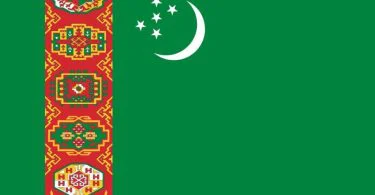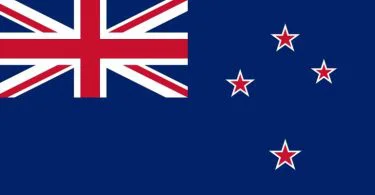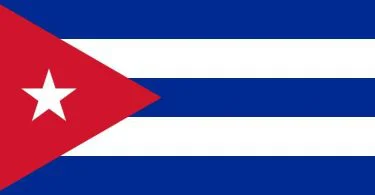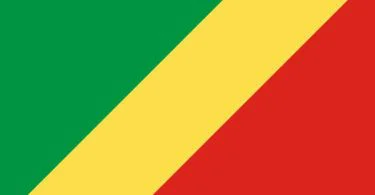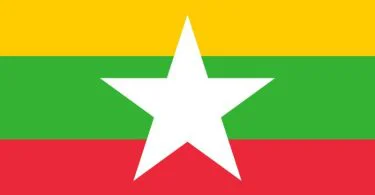PART 1. Preliminary 1. Constitution as the fundamental law 2. Sovereignty and state authority 3. Nation 4. State of Nepal 5. National interest 6. Language of the nation 7. Language of official transaction 8. National flag 9. National anthem, etc. Part 2. Citizenship 10. Not to be denied of citizenship 11. To be deemed citizen of Nepal 12. Citizenship based on descent and gender identity 13. Acquisition, re-acquisition and termination of citizenship 14. Non-resident Nepali citizenship may be granted 15. Other provisions related to citizenship of Nepal PART 3. Fundamental Rights and Duties 16. Right to live with dignity 17. Right to Freedom 18. Right to equality 19. Right to communication 20. Right to Justice 21. Right of victim of crime 22. Right against torture 23. Right against preventive detention 24. Right against untouchability and discrimination 25. Right to property 26. Right to religious freedom 27. Right to information 28. Right to privacy 29. Right against exploitation 30. Right regarding clean environment 31. Right to education 32. Right to language and culture 33. Right to employment 34. Right regarding labor 35. Right to health care 36. Right to food 37. Right to housing 38. Right of women 39. Right of children 40. Right of Dalits 41. Right of senior citizens 42. Right to social justice 43. Right to social security 44. Right of consumers 45. Right against exile 46. Right to constitutional remedy 47. Implementation of fundamental rights 48. Duties of citizens PART 4. Directive Principles, Policies and Responsibilities of the State 49. To be the Guiding Principles 50. Directive Principles 51. State policies 52. Obligation of the Sate 53. Submitting report 54. Provision regarding monitoring 55. Questions not to be raised in court PART 5. Restructuring of the State and the distribution of State power 56. Structure of the State 57. Distribution of State power 58. Residual powers 59. Use of fiscal power 60. Distribution of sources of revenue PART 6. President and vice-President 61. President 62. Election of the President 63. Term of Office of President 64. Qualifications of the President 65. The circumstances in which the President ceases to hold office 66. Functions, duties and powers of the President 67. Vice-President 68. The circumstances in which the Vice-President ceases to hold office 69. Other provisions regarding the Vice-President 70. President and Vice-President to belong to different gender or community 71. Oath of office of the President and Vice-President 72. Remuneration and other benefits to the President and Vice-President 73. Office of the President and the Vice-President PART 7. Federal Executive 74. Form of governance 75. Executive Power 76. Formation of the Council of Ministers 77. Circumstances under which the Prime Minister and minister ceases to hold office 78. A person to be a minister who is not a member of the Federal Parliament 79. The remuneration and other benefits to the Prime Minister, deputy Prime Minister, minister, state minister and assistant minister 80. Oath of office 81. The President to be informed 82. The working procedure of the government of Nepal PART 8. Federal Parliament 83. Federal Parliament 84. Constitution of House of Representatives 85. Term of House of Representatives 86. Constitution of National Assembly and terms of members 87. Qualifications for Members 88. Oath 89. Vacation of seat 90. Decision as to Disqualification of Members 91. Speaker and Deputy-Speaker of the House of Representatives 92. Chairperson and Vice-Chairperson of National Assembly 93. Summoning and Prorogation of Sessions 94. Quorum 95. Address by President 96. Deputy Prime-minister, State Minister and Assistant Minister Entitled to Take Part in Both Houses 97. Formation of Committees 98. Transaction of Business in case of vacancy of Members 99. Voting 100. Provision related to Vote of Confidence and Motion of no-confidence 101. Impeachment 102. Penalty for Unauthorized Presence or Voting 103. Privileges 104. Procedures relating to the Conduct of Business 105. Restriction on discussion 106. Secretary General and Secretary of Federal Parliament 107. Secretariat of Federal Parliament 108. Remuneration PART 9. Federal Legislative Procedure 109. Legislative power of Federal Parliament 110. The procedure of introducing a Bill 111. Procedure for passing Bills 112. Withdrawal of Bill 113. Certification of the Bills 114. Ordinance PART 10. Federal Financial Procedures 115. Not tax to be levied or loan to be raised 116. Federal Consolidated Fund 117. Expenditure from Federal Consolidated Fund or Federal Government Fund 118. Expenditure chargeable on the Federal Consolidated Fund 119. Estimates of Revenues and Expenditure 120. Appropriation Act 121. Supplementary estimates 122. Votes on Account 123. Votes of credit 124. Federal Contingency Fund 125. Act relating to financial Procedures PART 11. Judiciary 126. Courts to exercise powers related to justice 127. Courts 128. Supreme Court 129. Appointment and qualifications of Chief Justice and Justices of the Supreme Court 130. Conditions of service and benefits of the Chief Justice and Justices 131. Vacation of Office of Chief Justice or Justices of the Supreme Court 132. Chief Justice and Justices not to be engaged in any other assignment 133. Jurisdiction of the Supreme Court 134. Transfer of cases 135. Not to be part of pleading of court cases 136. Responsibility of the Chief Justice 137. Formation of the Constitutional Bench 138. Annual report 139. High Court 140. The appointment and qualifications of the Chief Judge and Judges of the High Court 141. Conditions of service and benefits of Chief Judge and Judges 142. Vacancy of office of the Chief Judge or Judge 143. Chief Judge and Judge not be engaged in any other assignment and transfer related provision 144. Jurisdiction of the High Court 145. Transfer of cases 146. Allowed to plead 147. Responsibility of the Chief Judge 148. District Court 149. Appointment, qualifications and remuneration and other terms of service of the Judges of District Courts 150. Judges of the District Court not to be engaged in any other assignment and provisions related to transfer 151. Jurisdiction of the District Court 152. Specialized court 153. Judicial Council 154. Judicial Service Commission 155. Provisions related to conditions of service and benefits 156. Provisions related to provincial level Judicial Service Commission PART 12. Attorney General 157. Attorney General 158. Functions, Duties and Powers of Attorney General 159. Annual Report 160. Chief Attorney 161. Provisions Concerning Terms and Conditions of Service and Benefits PART 13. Provincial Executive 162. Provincial executive power 163. Provisions related to the Provincial Head 164. Qualifications of Provincial Head 165. Vacation of the post of Provincial Head 166. Functions, duties and powers of Provincial Head 167. Oath of Provincial Head 168. Constitution of the Provincial Council of Ministers 169. Vacancy of office of Chief Minister and Ministers 170. Appointment of non-member of Provincial Assembly as Minister, State Minister or Assistant Minister 171. Remuneration and other benefits of Chief Minister, Minister, State Minister and Assistant Minister 172. Oath 173. Provincial Head to be informed 174. Conduct of business of the Provincial government PART 14. Provincial Legislature 175. Provincial Legislature 176. Formation of the Provincial Assembly 177. Term of Provincial Assembly 178. Qualification of members of Provincial Assembly 179. Oath of member of Provincial Assembly 180. Vacation of seat of Provincial Assembly member 181. Decision about disqualification of members of Provincial Assembly 182. Speaker and Deputy Speaker of the Provincial Assembly 183. Summoning and prorogation of sessions of Provincial Assembly 184. Address by the Provincial Head 185. Quorum of Provincial Assembly 186. Voting in Provincial Assembly 187. Privileges of Provincial Assembly 188. Provisions related to Vote of Confidence and no-confidence motion 189. Minister, State Minister and Assistant Minister to attend the meeting of Provincial Assembly 190. Unauthorized presence or voting in Provincial Assembly to be penalized 191. Restriction on discussion 192. Transaction of business in case of vacancy in membership 193. Provincial Assembly to form committees 194. Procedure relating to the conduct of business of the Provincial Assembly 195. Secretary and Secretariat of the Provincial Assembly 196. Remuneration PART 15. Provincial Legislative Procedure 197. Legislative power of Provincial Legislature 198. Procedure to introduce bills in the Provincial Assembly 199. Procedure for Passing Bills 200. Withdrawal of the Bill 201. Certification of the Bill 202. Ordinance PART 16. Financial Procedures of Province 203. No tax to be levied or loan to be raised 204. Consolidated Fund of the Province 205. Expenditures from the Provincial Consolidated Fund or a Provincial Government Fund 206. Expenditure chargeable on the Provincial Consolidated Fund 207. Estimates of revenues and expenditure 208. Province Appropriation Act 209. Supplementary estimates 210. Votes on account 211. Votes of credit 212. Provincial Contingency Fund 213. Act relating to financial procedures PART 17. Local Executive 214. Executive power of local 215. Provisions related to Head and Deputy Head of Village Executive 216. Provisions related to Mayor and Deputy Mayor of Municipality 217. Judicial Committee 218. Conduct of business of Village Executive and Municipal Executive 219. Other provisions related to local level executive 220. District Assembly and District Co-ordination Committee PART 18. Local Legislature 221. Legislative Power of Local Level 222. Formation of Village Assembly 223. Constitution of Municipal Assembly 224. Chairperson and Vice-Chairperson of Village Assembly and Municipal Assembly 225. Term of office of Village Assembly and Municipal Assembly 226. To form laws 227. Other provisions related to Village Assembly and Municipal Assembly PART 19. Local Financial Procedure 228. No tax to be levied or loan to be raised 229. Local Consolidated Fund 230. Estimate of Revenue and Expenditure of Village Council and Municipality PART 20. Interrelationship between the Federation, Provinces and Local levels 231. Legislative interrelationship between Federation and Province 232. Relations between the Federation, Provinces and local level 233. Relations among the Provinces 234. Inter-Provincial Council 235. Coordination among the Federation, Provinces and local Levels 236. Interprovincial Trade 237. Jurisdiction of the Constitutional Court not to be affected PART 21. Commission for the Investigation of Abuse of Authority 238. Commission for the Investigation of Abuse of Authority 239. Functions, duties and powers of the Commission for the Investigation of Abuse of Authority PART 22. Auditor General 240. Auditor General 241. Functions, duties and powers of the Auditor General PART 23. Public Service Commission 242. Public Service Commission 243. Functions, duties and powers of the Public Service Commission 244. Provision related to Provincial Public Service Commission PART 24. Election Commission 245. Election Commission 246. Functions duties and, powers of Election Commission 247. Necessary Cooperation to be Extended PART 25. National Human Rights Commission 248. National Human Rights Commission 249. Functions, duties and powers of National Human Rights Commission PART 26. National Natural Resources and Fiscal Commission 250. National Natural Resources and Fiscal Commission 251. The functions, duties and powers of National Natural Resources and Fiscal Commission PART 27. Other Commissions 252. National Women Commission 253. Functions, duties and powers of the National Women Commission 254. Offices may be established in province 255. National Dalit Commission 256. Functions, duties and powers of National Dalit Commission 257. Offices may be established in province 258. National Inclusion Commission 259. Functions, duties and powers of National Inclusion Commission 260. Offices may be established in province 261. Adibasi Janajati Commission 262. Madheshi Commission 263. Tharu Commission 264. Muslim Commission 265. Review of the Commissions PART 28. Provision regarding National Security 266. National Defense Council 267. Provision relating to Nepal Army 268. Provision relating to Nepal Police, Armed Police Force, Nepal and National Investigation Organization PART 29. Provision relating to Political Parties 269. Constitution, registration and operation of Political Parties 270. Prohibition on the imposition of restrictions on political parties 271. Registration required for securing recognition for the purpose of contesting elections as a Political Party 272. Other provisions relating to Political Party PART 30. Emergency Powers 273. Emergency Powers PART 31. Amendment of the Constitution 274. Amendment of the Constitution PART 32. Miscellaneous 275. Provision relating to Referendum 276. Pardon 277. Titles, honors, and decorations 278. Right to enter into treaty 279. Ratification of, accession to, acceptance of or approval of treaties or agreement 280. Special Provision Relating to Exercise of President Function 281. Review and revision of Special Powers 282. Nepali Ambassadors and Emissaries 283. Appointment to be made on Inclusive Principles 284. Provision relating to Constitutional Council 285. Formation of the Government Service 286. Election Constituency Delimitation Commission 287. Language Commission 288. Capital 289. Special provisions relating to Citizenship of the office-bearers 290. Provision relating to Trust 291. Not Eligible for Appointment 292. Provision relating to Parliamentary Hearing 293. Monitoring and evaluation of works of Constitutional Bodies 294. Annual report of Constitutional Body PART 33. Transitional Provisions 295. Formation of Federal Commission 296. Constituent Assembly to be transformed into Legislature-parliament 297. Provisions relating to the President and Vice-President 298. Provision relating to Constitution of Council of Ministers 299. Interim provision regarding Speaker and Deputy-speaker 300. Provision relating to the Judiciary 301. Provisions regarding Constitutional Bodies and Officials thereof 302. Formation and Operation of Government Services in Provincial and Local Level 303. Provision regarding the Local Bodies 304. Existing laws to remain in operation 305. Power to remove difficulties PART 34. Definitions and Interpretations 306. Definitions and Interpretations PART 35. Short Title, Commencement and Repeal 307. Short title, Commencement and Repeal 308. Repeal SCHEDULE 1. Method of Making the National Flag of Nepal (RELATED WITH CLAUSE (2) OF ARTICLE 8 SCHEDULE 2. National Anthem of Nepal (RELATED TO CLAUSE (1), ARTICLE 9 SCHEDULE 3. Coat of Arms of Nepal (RELATED TO CLAUSE (2), ARTICLE 9
This constitution is the fundamental law of Nepal. All laws inconsistent with this constitution shall, to the extent of such inconsistency, be void.
It shall be the duty of every person to uphold this constitution.
The sovereignty and state authority of Nepal are vested in Nepali people. The use of which shall be as provided for in this constitution.
Having multi-ethnic, multi-lingual, multi-religious, multi-cultural characteristics with common aspirations of people living in diverse geographical regions, and being committed to and united by a bond of allegiance to national independence, territorial integrity, national interest and prosperity of Nepal, all the Nepali people collectively constitute the nation.
Nepal is an independent, indivisible, sovereign, secular, inclusive democratic, socialism-oriented federal democratic republican state.Explanation: For the purpose of this article, ‘secular’ means protection of religion and culture being practiced since ancient times and religious and cultural freedom.
The territory of Nepal shall comprise:
the territory existing at the commencement of this constitution, and
such other territory as may be acquired after the commencement of this constitution.
Independence, sovereignty, territorial integrity, nationality, autonomy, self-respect, protection of rights and interests of Nepali people, protection of boundaries, and economic progress and prosperity, shall be the fundamental subjects of Nepal’s national interest.
Act and character against national interest shall be punishable by Federal law.
All the mother tongues spoken in Nepal shall be the national language.
The Nepali language written in Devanagiri script shall be the language of official business in Nepal.
In addition to Nepali language, a province shall select one or more national language that is spoken by majority of people in that province as the language of official business, as provided for by the provincial law.
Other matters concerning language shall be as decided by the Government of Nepal on the recommendation of the Language Commission.
The national flag of Nepal, consists of two juxtaposed triangular figures with a crimson colored base and deep blue borders, there being a white emblem of the crescent moon with eight rays visible out of sixteen in the upper part and a white emblem of a twelve rayed sun in the lower part.
The method of drawing the flag and other particulars relating thereto shall be as set out in Schedule-1.
The national anthem of Nepal shall be as set out in Schedule-2.
The coat-of-arms of Nepal shall be shall be as set out in Schedule-3.
The Rhododendron Arboreum is the national flower, Crimson is the national color, the cow is the national animal and the Lophophorus is the national bird of Nepal.
Get more fascinating contents like this on Facebook .

